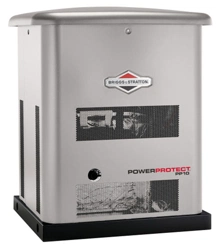Loading ...
Loading ...
Loading ...

12
The following table includes some examples of potential entry points for CO gas.
LOCATION ENTRY POINT EXPLANATION
A
Windows and
doors
Openings that are part of a structure’s architecture can permit fresh air and CO into the
structure, especially when open.
B Garage door An open or improperly unsealed garage door can allow CO to ow into a garage.
C Attic vent
Generator exhaust can enter through attic vents and the vents for sots, crawl spaces,
and ridges or roofs.
D
Basement
windows
Basement windows or hatches that permit ventilation to or from the structure’s lower level
also allow CO gas to enter the structure.
E
Furnace intake
or exhaust vent
Air intakes and furnace exhaust pipes are common entry points for CO gas.
F Wall cracks
Any cracks in a structure’s walls, including the foundation and mortar, and any gaps around
windows, doors, and pipes can let CO in.
G Dryer vent Sometimes the exhaust vent for the clothes dryer lets CO gas into the structure.
H
Airow
restrictions
Areas featuring structural corners and heavy vegetation restrict the airow and collect
exhaust gas.
J
Makeup air
system
Note: Keep all mechanical and gravity outdoor air intake openings for HVAC supply air
systems 10 ft (3,0488 m) horizontally from the generator’s enclosure. Refer to section 401
in the ICC Mechanical Code for details on requirements.
K
Carbon
monoxide
detector(s)
Note: Installing functioning CO alarms indoors is the only way to recognize CO gas.
Common smoke alarms do not detect CO gas and will not alert occupants of its presence.
Protecting the Structure
Check the structure to ensure that the sealing and caulking remains adequate enough to prevent air from leaking in or out.
Examine the structure for voids, cracks, or openings surrounding windows, doors, sots, pipes, and vents, as these areas can
permit exhaust gas and CO to enter the structure.
Not for
Reproduction
Loading ...
Loading ...
Loading ...
